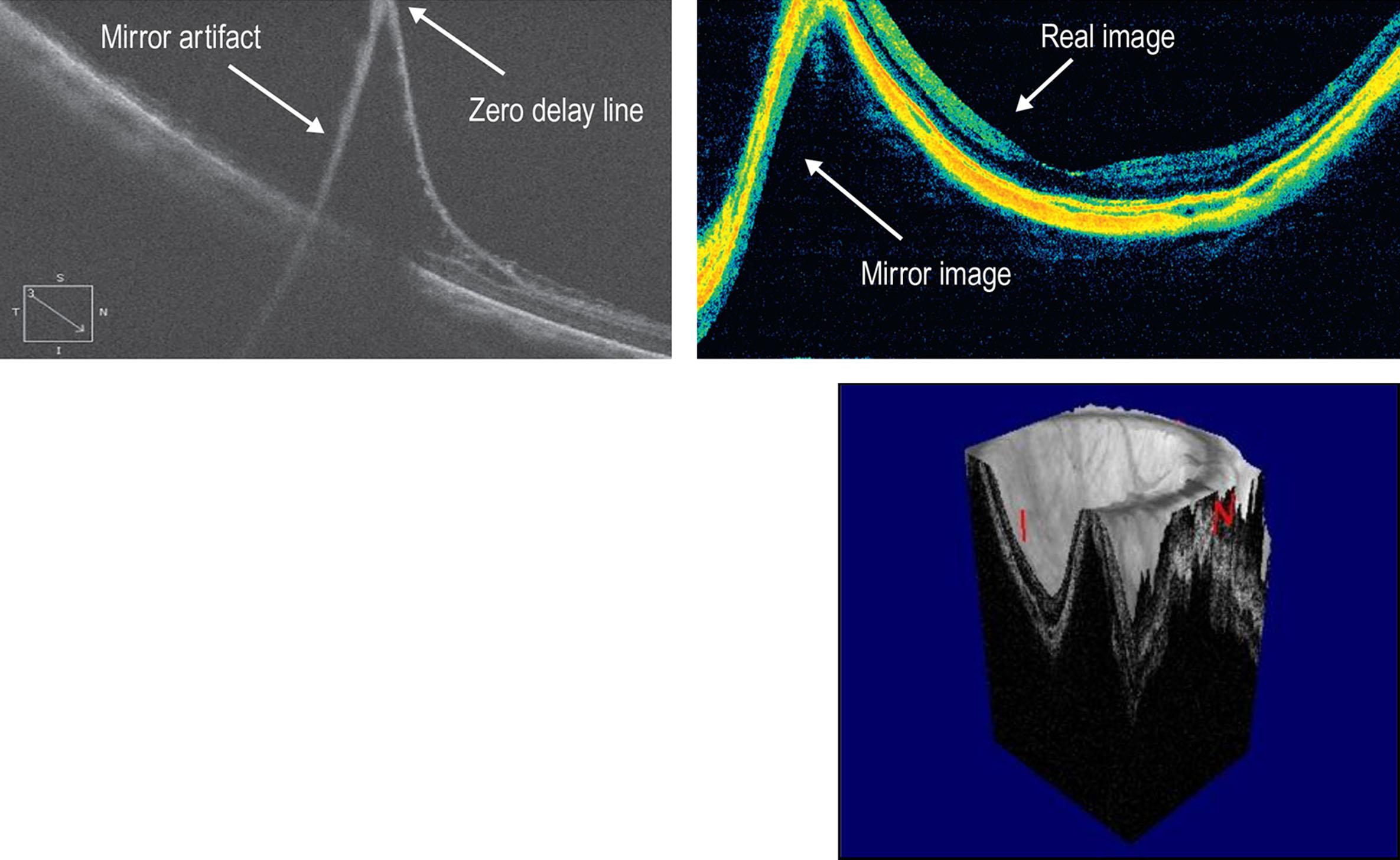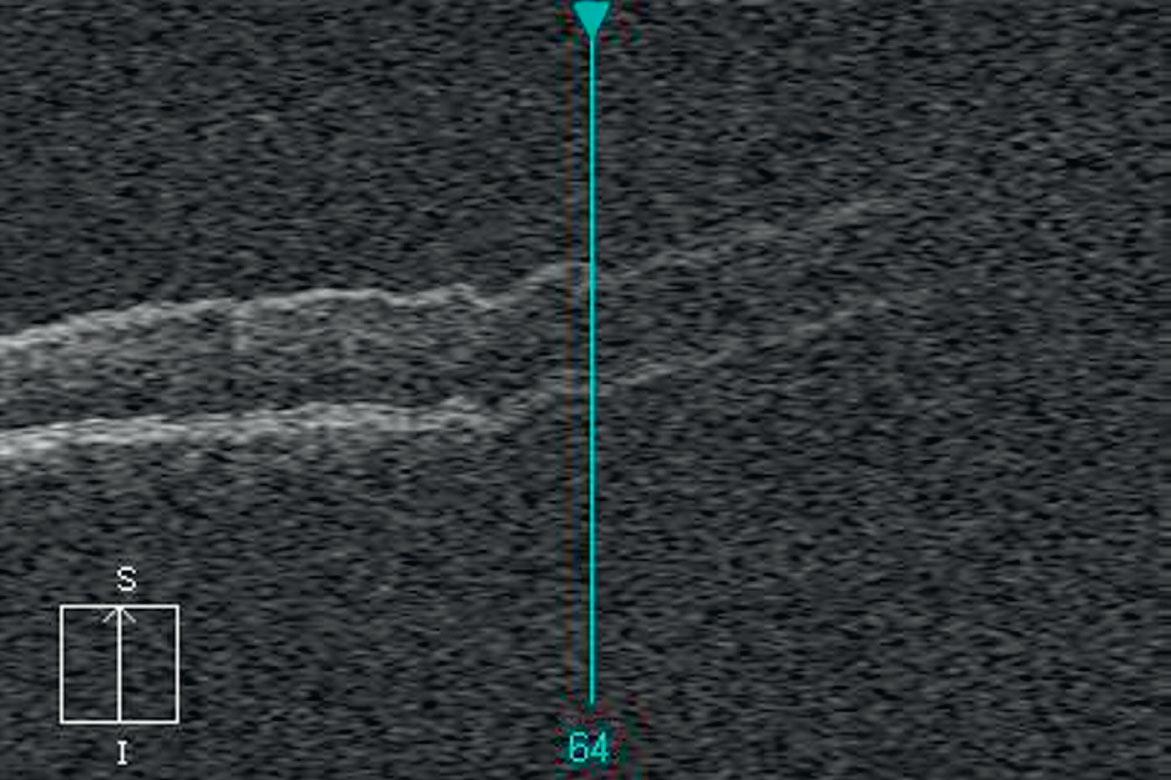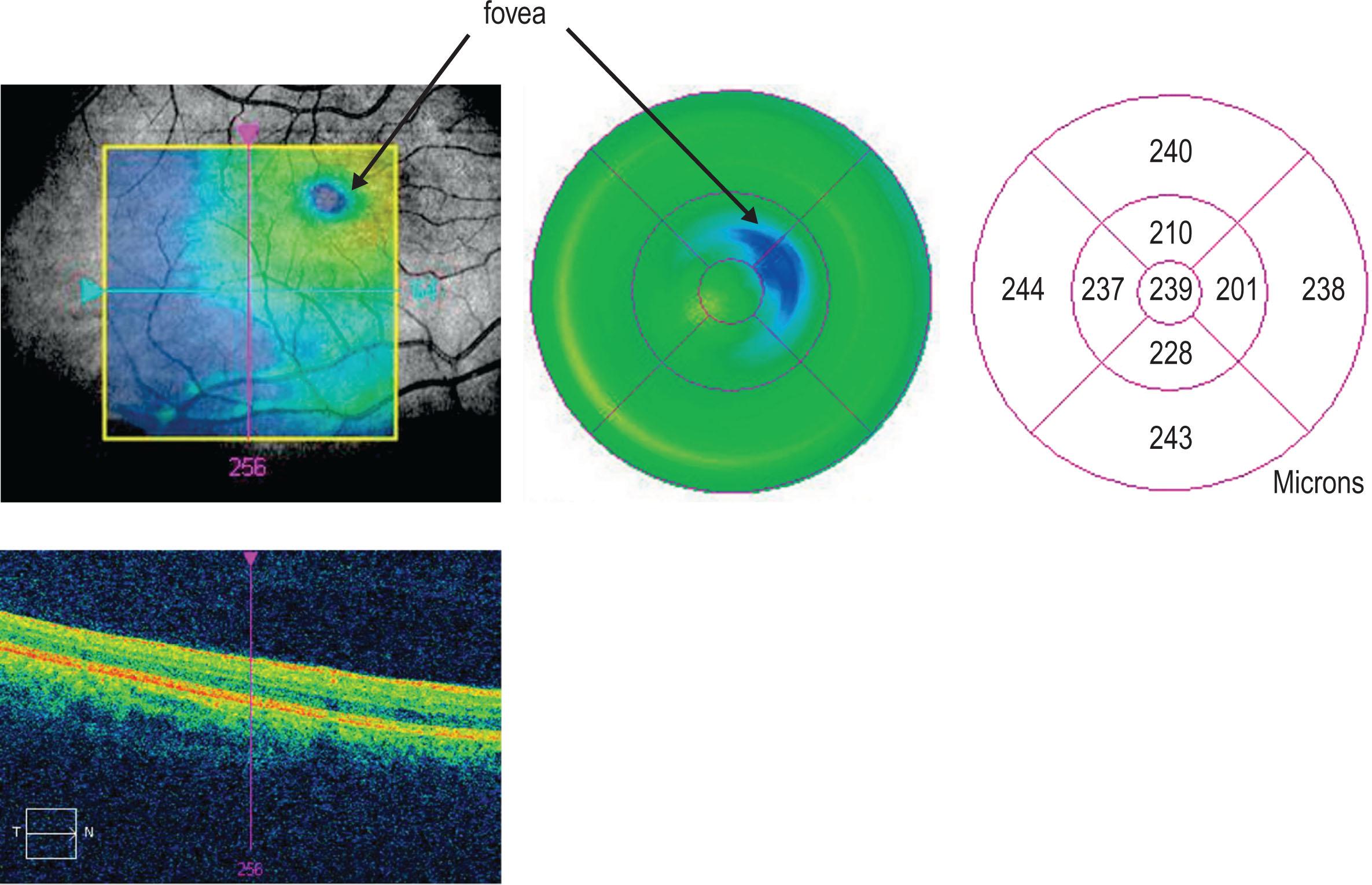Physical Address
304 North Cardinal St.
Dorchester Center, MA 02124
Artifacts can occur during image acquisition or analysis as a result of software, patient, or operator factors. It is important to identify artifacts because they may affect the qualitative or quantitative interpretation of images. This chapter will discuss artifacts that occur with spectral domain (SD)-OCT and OCT angiography (OCTA) scanning.
Cause: This artifact occurs when the eye is positioned incorrectly or when the retinal features of interest span a large depth range (e.g., in scanning bullous detached retina). The OCT image is generated by interference between the sample beam and a reference beam. The sample beam is delayed in its return with respect to the reference beam and the reference beam therefore determines a zero delay line. The SD-OCT cannot distinguish between positive and negative delays and if the zero delay line is pushed so that it is at the surface of or beyond the surface of the retina, light from the retina may actually return sooner than the reference beam generating negative interference, which then generates an inverted OCT scan. Thus, as the OCT scanner is positioned closer to the retina, parts of the retina that are beyond the zero delay line appear folded. As the scanner is pushed even further, the entire retinal image may appear inverted and this is called the mirror artifact.
An interesting corollary to this is that whereas in some machines, such as the Zeiss Cirrus system, there is decreased resolution with the mirroring, in other machines this may be done deliberately to allow better interference of the reference beam with light reflected from the choroid and thus allow better visualization of the choroidal structures, something that most commercially available machines now exploit in Enhanced Depth Imaging protocols.
Identification: Inverted, partly inverted, possibly poor resolution image.
Correction: Patients will need to be re-scanned to correct this error ( Fig. 3.1.1 ).

Cause: This occurs when part of the OCT beam is blocked by the iris.
Identification: This is typically characterized by a loss of signal over one side of the image.
Correction: This can be corrected by repositioning the OCT machine so that it is the correct distance from the eye, and by observing the rendered fundus image so that there is no shadowing seen when acquiring the OCT image ( Fig. 3.1.2 ).

Cause: A misalignment artifact occurs when the ETDRS (Early Treatment Diabetic Retinopathy Study) grid in a quantitative volumetric scan is not centered on the fovea. This typically happens in patients with poor or eccentric fixation or poor attention.
Identification: In this situation, the normal foveal depression that usually appears blue on the ETDRS map is not aligned with the center of the ETDRS macular grid.
Correction: We can manually correct misalignment on most SD-OCT machines. Alternatively, the patient can be rescanned using external fixation ( Fig. 3.1.3 ).

Become a Clinical Tree membership for Full access and enjoy Unlimited articles
If you are a member. Log in here